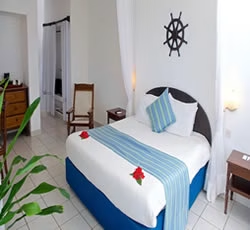Overview
Wildebeest typically inhabit the Serengeti plains of southeastern Africa. The migrate to neighbouring Masai Mara National Reserve normally from July to October. For most of their lives, wildebeest graze in the grassy savannas and open woodlands of the plains, which straddle the nations of Tanzania and Kenya.
It is important to understand that the timings provided in this article varies slightly and researchers keep finding reasons why that happens. Guided by natural instincts to survive they trek 800 to 1100 km in dispersal patterns grouping to cross the fearsome vale of death crossing the Mara River
Although they migrate in groups with a natural leader, more than 1.5 million wildebeest migrate in an enormous loop every year. The annual migration northwest, at the end of the rainy season (usually in May or June) is recognized as one of the "Seven Wonders of the Natural World."
The search for greener pastures does not come without danger. Its migration route crosses many rivers, most filled with giant Nile crocodiles, predatory hyenas, wild dogs, and the larger cats
The Migration in Serengeti National Park
November - March
The short rains begin around early November. A little after this, in late November and December, the herds of the wildebeest migration arrive on the short-grass plains of the Serengeti.
These are south and east of Seronera, around Ndutu and include the north of the Ngorongoro Conservation Area. Dispersed across these plains, wildebeest and zebra are everywhere – feeding on the fresh, nutritious grasses.
They stay here through January, February and March, with most wildebeest calves born in a short window around February. Gradually they spread west across these plains, then around April they start their great migration north.
April, May & June
By May the Serengeti's wildebeest all seem to be moving north, migrating to seek fresh grazing and water. The area around Moru Kopjes and west of Seronera is then hectic with a series of moving columns, often containing hundreds of thousands of animals – joined by many zebra, and a scattering of Thomson's and Grant's gazelles.
Some of the migration then head due north of Seronera, but most are usually further west. Around June the wildebeest migration is often halted on the south side of the Grumeti River, which has some channels which block or slow their migration north. The wildebeest then congregate there, in the Western Corridor, often building up to a high density before crossing the river. The river here is normally a series of pools and channels, but it's not continuous – and so whilst they always represent an annual feast for the Grumeti River's large crocodiles, these aren't usually quite as spectacular as the crossings of the Mara River, further north.
July and August
The wildebeest migration continues moving northwards during July and August, often spreading out across a broad front into the Mara with some heading through Grumeti Reserve and Ikorongo, others north through the heart of the Serengeti National Park.
Watching the frantic herds of the wildebeest migration crossing the Mara River can be very spectacular; there are often scenes of great panic and confusion. It's common to see herds cross the Mara River north on one day, and then back south a few days later.
October – Return to Tanzania
By October the wildebeest herds are migrating again with more accord: all are heading south, through western Loliondo and the Serengeti National Park's Lobo area, returning to the green shoots which follow the rains on the short-grass plains of the southern Serengeti in November. The cycle starts again.
Masai Mara Migration Safari (July-October)
Early booking is always the secret of fulfilling migration safari in Masai Mara, Kenya. The amazing phenomenon attracts hundreds of visitors locally and internationally and facilities at maximum booking. Accommodation facilities close to the herds especially with a view from your tent are normally more expensive at the opportunity cost of driving to the action from another accommodation facility that offers all-round classic service. We cannot choose either for you, but will provide you with detailed comparison charts of the pros and cons of either.
It is regarded by many that the Mara River crossings are the most sensational and provide a more satisfactory experience of the migration as opposed to seeing the herds
Location | Drive-in Time | Viewing Value | All-Round Value |
Close to Herds | Little or no time used to drive to view. | This is great value in itself You may have to choose this for medium service and comfort | Best locations are twice as expensive |
Other location within Masai Mara Central Regions | Lesser time used to drive from these locations | Most facilities we can help you choose are near the river crossings | Better all round value and mid to top range cost |
Drive from Greater Mara Conservancies | Mara North Conservancy is more close to the Paradise Plains crossing. Less than 30 minutes drive to crossings Lodges and tented camps in this area normally upper classs | Spend more time in the expanse of the conservancies enjoying un-crowded wildlife spotting and drive for a day or so to the Mara River crossings | Top value all-round |
Facilities in Talek Area or Ololaimutia outside the park | Longer drives up to 60km from Olalaimutia via Talek Gate Up to 40 kms from Talek area to the crossings | Be willing to spend more nights to explore rest of Mara and enjoy the crossings too | Budget and mid-range facilities |
A Suggested Itinerary for a Wildlife Migration Safari with Family
Your appointed stay is at family or child friendly lodge or camp in Masai Mara. For cost saving as is ideal for a family trip, we recommend Mara Intrepids
During the great migration season July to October, we recommend 3 nights in Masai Mara to get most value. The wild is now populated with over 1.5m herbivores, The predators hunt, the vultures and the hyenas grapple for remains. The crocodiles are smiling at nature's largesse. You are there to watch all that and more. 3 Nights in the park means that you have ample time traversing this park known to be one of the worlds best for game spotting and more so, the melodramas that demand your attention at the Mara River crossing points.
When you choose this season safari, you are guaranteed:-
- Excellent game spotting
- Best price for a private safari with early booking
- Services of a certified professional safari guide knowledgeable in the flora and fauna of the Mara
- 3 Nights at a lodge or camp in the heart of Masai Mara that suits your budget
- Return Airport transfers in a comfortable vehicle
- Probability of witnessing the river crossings (depends on the your timing for booking) especially in the 1-3rd weeks of July
- Park fees
- Complimentary bottled water on safari
- Emergency Medical Evacuation Services (Flying doctor services)
Recommended Value Accommodations:
&Beyond Bateleur Camp, Masai Mara
This romantic and exclusive camp reflects the ambiance of Kenyan safaris of the ‘20s and ‘30s and is situated below the scenic location where the famous final scene of the movie Out of Africa was filmed. The epitome of tented luxury, &Beyond Bateleur Camp is set among the forests on the edge of the Masai Mara.
The views from the ‘lounge’ of your tent are mesmerizing and feeling of being in the Africa you wanted is never lost at Bateleur Camp. Animals are strewn in great numbers at eye view.
You are offered complimentary use of Swarovski Optik binoculars to the absolute delight of Bateleur’s safari theatre in addition to frothy cappuccinos and colourful cocktails on game drives, at Bateleur Camp. Do not be surprised to realize that all service personnel at this classic camp are sensitized to make your holiday stay pleasant. At Bateleur, Kenyan hospitality and personalized thoughtful service abounds.
The guests experience is tailored to the needs and wants of the guest and discussed with the guide and camp manager daily. For a stay at Masai Mara for 3-4 nights, guest on romantic holidays never go wrong with the choice of &Beyond Bateleur Camp.
The Ups of Bateleur Camp
- Suitably appointed location for wildlife encounters
- Enjoy timeless views across the boundless plains of the Masai Mara; the savannah landscape that unfolds in front of the camp is dotted with balanites trees – a definitive feature of this region. With unbroken views over the grassy plains, guests can while away their afternoon on the private deck of their tent, or alongside the camp swimming pool.
- A place to relax for parents in the evening
- Delight in delicious hearty breakfasts with your table set in the wild, chilled sundowners in the vast expanse and bush dinners under star studded skies. No doubt, the food at Bateleur is superb.
- Participate in fascinating bush walks and thrilling day and night drives, and more so, not far from the camp.
- Enjoy the services of a private butler, plated service and private dining, just what you need in your romantic holiday in Masai Mara
Day to Day
This safari can be enjoiner to a greater family safari rather than be referred as a full family vacation. We always suggest a visit to other places as suggested in our family safari guide and the end at the crest of wildlife Africa adventure holiday at Masai Mara.
Day 01: Nairobi - Masai Mara Game Reserve
We depart from your Nairobi hotel early in the morning after breakfast and head to the crown jewel of our safari - Masai Mara National Reserve. Arrive in time for lunch. Relax after lunch and head for an afternoon game drive in Masai Mara till dusk. Return to lodge or camp for dinner and overnight.
Day 02 -03: Masai Mara
Children can join in today for a visit to a cultural village and for wild game viewing. Enjoy full day game drives with packed lunches and return to your selected lodge for dinner and overnight
Day 04: Masai Mara - Nairobi
Enjoy an optional pre-breakfast game drive. Return to Nairobi after checking out, arriving early afternoon.
Safari ends with a drop off at the airport at the time of your choosing
How To Book This Holiday
- As suggested a migration safari to Masai Mara or Serengeti requires early planning and early booking
- Discuss accommodation options and value with your Travel Specialist on whether you want to be closer to the action especially the river crossings, your needs as travel party in room sharing and mode of travel. We recommend a 4x4 safari.
- Choose to buy this as a package or request an enjoiner to other parks and coastal resorts
- Discuss activities that are optionally paid and plan for a balloon adventure over the Mara or Serengeti
Balloon Safari in Mara & Serengeti During the Migration
This is a safari activity, not a safari. It is a one hour adventure gliding over the skies of the Mara in a thrilling dreamstime adventure that every safari goer should enjoy at least once. Your wakeup call comes early for a warming cup of coffee and then transported to the hot air balloon 'airport'. Here you watch as the mighty humongous piece is made ready and fired for the journey. At 5.00am is the take-off.
Majestic 360 degrees panoramas to the far horizons of the Mara Savannah rolling grasslands and woodlands, riverine flora and more so, animals and thousands upon thousands of them (especially during the migration season of July to October) scattered all over and subduing the plains. The 'holy' moment comes at sunrise as the glowing star throws its first rays in a kaleidoscope of colors washing over everything and dispelling the mists of the morning
The travel party descends at 6.00am in the middle-of-nowhere for a fly-camp setup for a champagne breakfast. Eat well and then enjoy a game drive enroute back to your lodge / camp. A must do adventure especially with kids tall enough to view outside the 'basket'







